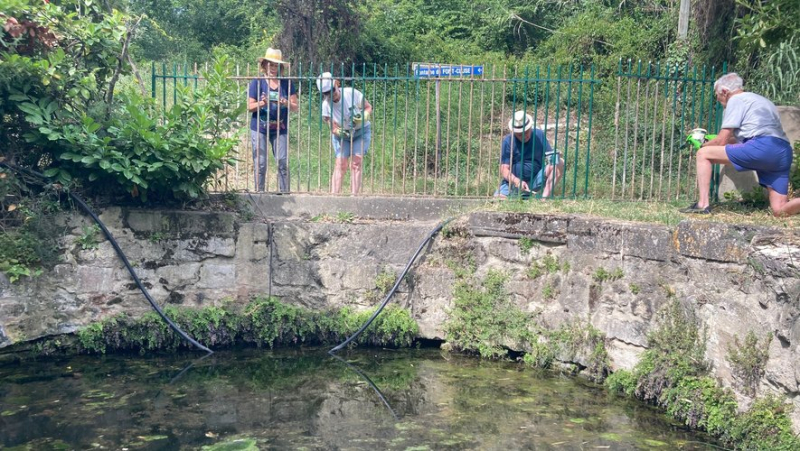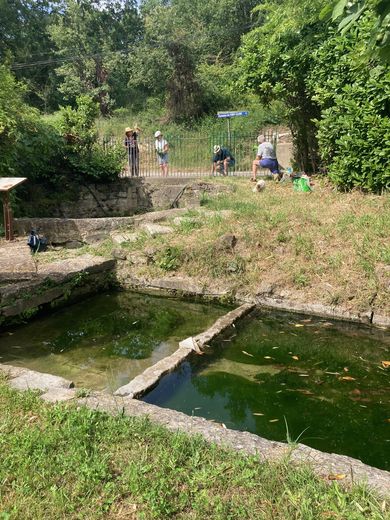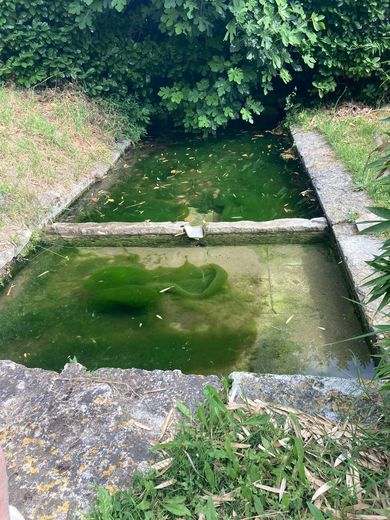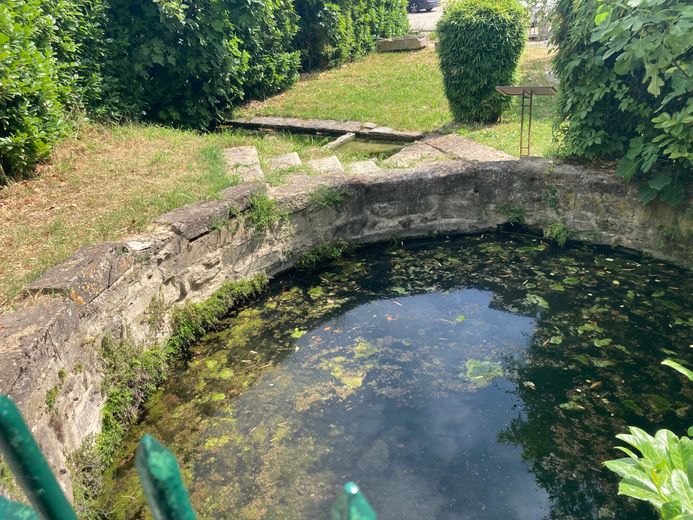The resurrection of Fontcluse, the “healing” spring of Meynes

Volunteers have done a lot of work restoring the site. Midi Libre – C.M.
Discovered by Charles Martel in 736, this spring attracted kings of France who came to be treated there. The Meynes Patrimoine association decided to restore it and give it back the place it deserves in the history of the region.
It is difficult to imagine, seeing the two modest little pools (one circular where the spring flows and one rectangular), wedged between a road and sheds, that the site of Fontcluse attracted the greatest figures in the history of France and even beyond: Charles Quint, François 1er, Henri IV, his first wife Marguerite de Valois, but also Louis XIII who came here four times, and Mme de Maintenon and Richelieu.
Carriages, sedan chairs… brought here men and women in search of well-being or healing thanks to the water from the spring to which many virtues were attributed, relieving among other things problems with the kidneys, liver, intestines, bladder, skin…
Dances, taverns, tents and cabins to restore and accommodate the crowd!
“There must have been quite a few things happening in the surrounding woods, because the king's doctor said that to be cured, one had to be gay! Balls and guinguettes were therefore organized!” says with a smile Pierre Salignon, president of Meynes Patrimoine, an association whose one of the projects is to rehabilitate this unjustly forgotten spring. If in Meynes, the site is known (a sign indicates its location, another explains its history), the spring had become invisible, invaded by vegetation. And its reputation hardly extends beyond the limits of the commune. "We want to give it back the place it deserves in the history of the region" explain the members of the association.
They have carried out a huge amount of work since spring to clear the site, clean the ponds of green algae and repaint the railings through which it can be seen from the Route de la Gare, between Meynes and Montfrin.

The site consists of two pools; a circular one and a rectangular one lower down. Midi Libre – C.M.
Today, the site has regained a calm and bucolic appearance. Quite far from what it must have been in the past if we judge by its history, traced by the Fontcluse commission chaired by Christiane Ferrand. "Given the considerable number of people who came from the region and even from all over France, traders had settled there by setting up tents and huts to restore all these people".
The kings came here to treat their… syphilis!
The spring was particularly renowned for curing syphilis (which was the reason why Francis I came, who was cured of it before going to besiege Perpignan in 1541). Henry IV also came for the same reason. At the time, it was a common and, above all, very painful disease. Most of these famous people were staying at the Château de Montfrin at the time.

The water that gushes forth is clear and crystalline, but the basin was invaded by algae. Midi Libre – C.M.
If the 16th and 17th centuries were the golden age of the spring, its virtues had been known for centuries. Since 736 to be exact. At the time, a great battle was being fought in the plain of Remoulins led by Charles Martel against the Saracens who occupied the region. History thus evokes this battle: “It is said that it was so bloody and so deadly that the Gardon had turned red, with 40,000 dead on both sides. The Franks emerged victorious, but with a large number of wounded. Some dragged themselves along trying to dress their wounds and happily discovered this clear spring at which they quenched their thirst and washed their wounds and those of their horses. They noticed that their wounds healed very quickly, and said that this water had special virtues.
Charlemagne came to Meynes to give his blessing to the spring
Charles Martel had a basin built there with a protective vault, hence its name Fontaine close (Fontcluse). In 742, Charlemagne came to Meynes and gave his blessing to the spring in front of the people.

The fountain is visible from the Route de la Gare. Midi Libre – C.M.
A water analysis was carried out in 1674 by Lucante, physician to King Louis XIV. The association was able to consult his 23-page report, a copy of which is kept at the Calvet Museum in Avignon: it mentions, among other things, chloride of magnesia, sodium; sodium sulfate, magnesia and lime, iron oxide, silicic acid and traces of sulfur.
Analyzed in 1674 by Louis XIV's physician
The water, which is ferruginous, would come from the Massif Central, more specifically from the Volcanoes region. Today, an analysis could certainly confirm and clarify this hypothesis and, above all, provide the exact composition of the water. The association plans to have one carried out soon. But the origin of the Massif Central does not surprise the members. “What is certain is that the water comes from far away”: ” It is a spring that never dries up, even in summer, and whose flow does not vary when there are heavy rains or violent storms here. And it is true that in Meynes, when it rains a lot in Auvergne, the water from all the springs in the commune flows more strongly. The spring then flows into the Gardon.
Horse-drawn carriage tours for Heritage Days
It is therefore a wonderful mission that the association has given itself, recalling that it is thanks to a Meynois passionate about history, Augustin Pascal, that the spring was saved in 1970. He had alerted the municipality to the need to buy back the plot so that it would not become private property. Which was done, fortunately!
After its development, the association also wants to make the spring better known by integrating it into visits to the village or during heritage days. “We have planned round trips in horse-drawn carriages”to show visitors around the site” announces the president. In the meantime, Pierre Salignonn”Christiane Ferrand, Joëlle Pattieu, Sylvie Labrune, Alain Mauger and Guy Soubeyran, volunteers”very involved in this project,” will take turns throughout the summer to maintain this little historical gem…
Contact: peio.salignon@gmail.com
I subscribe to read the rest




